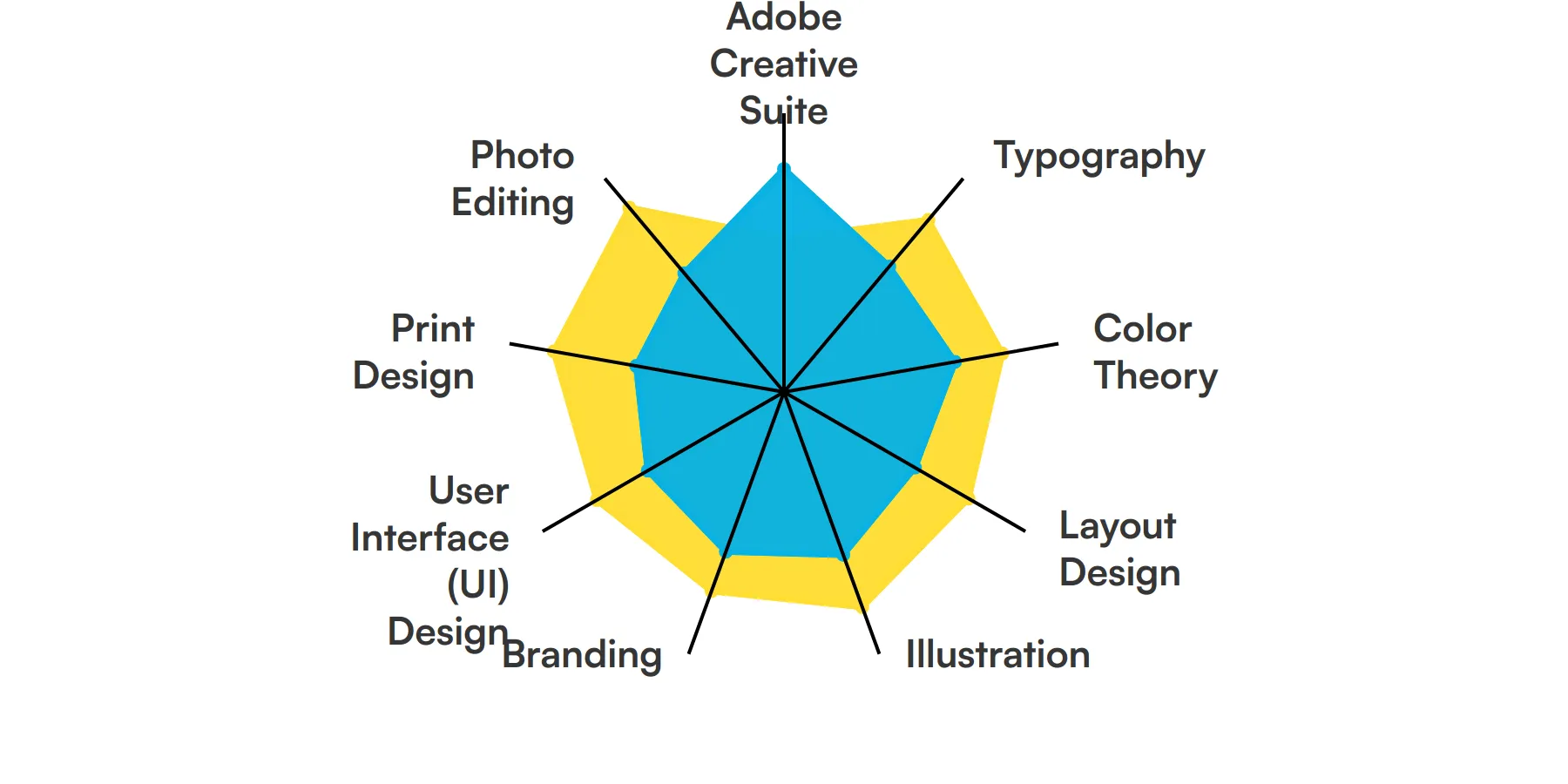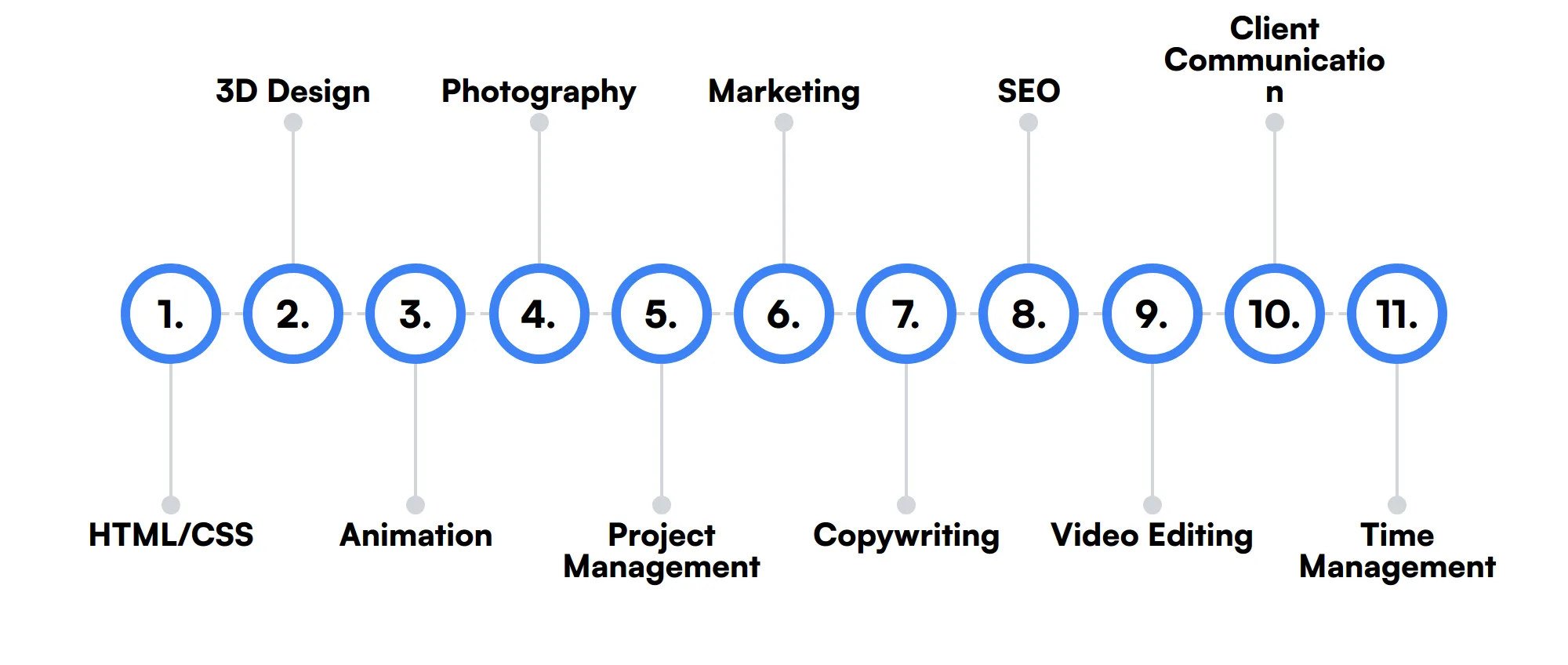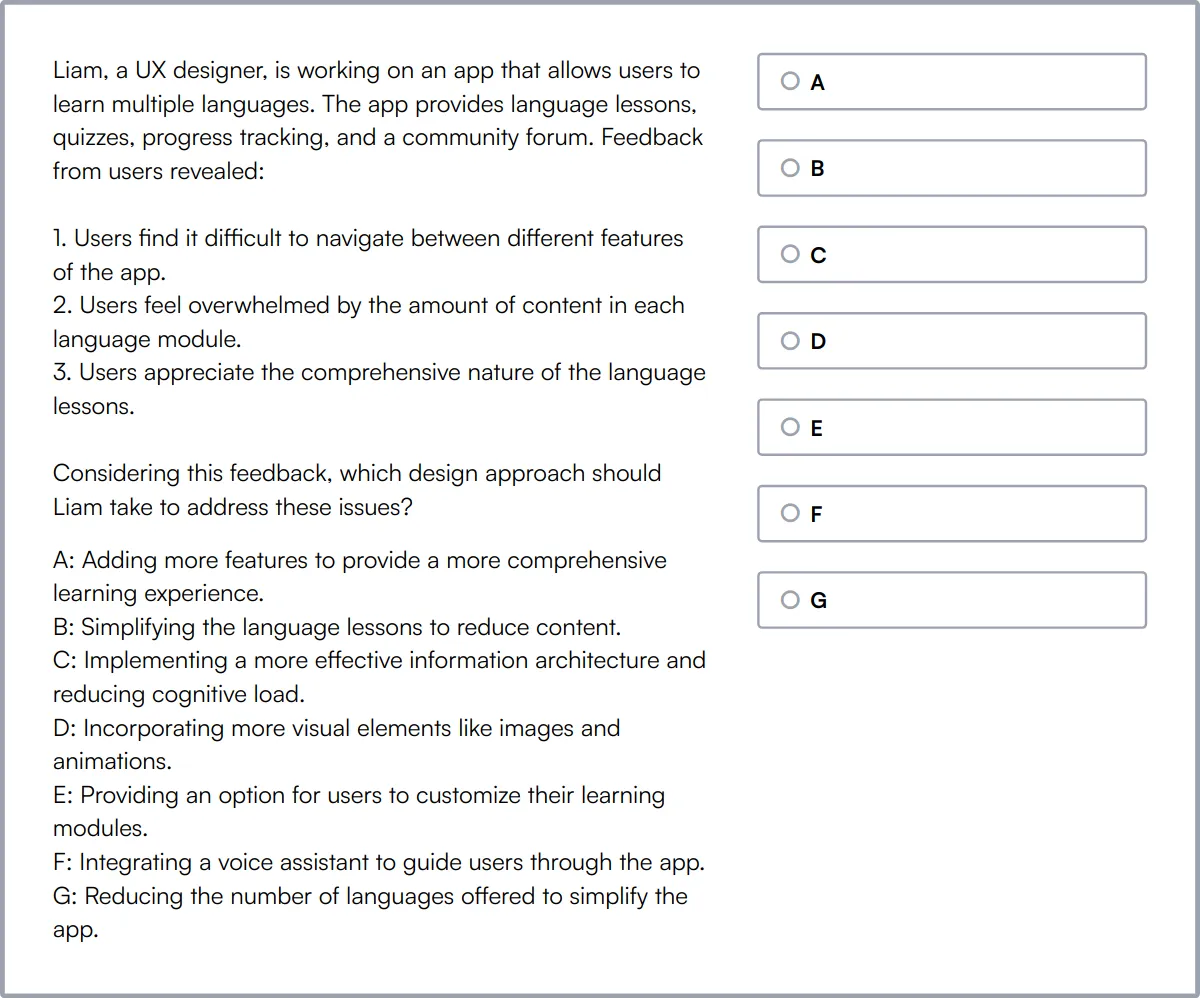Graphic designers are the creative minds behind visual content that communicates messages, evokes emotions, and captures the essence of brands. They work on a variety of projects, from logos and advertisements to websites and social media graphics, ensuring that each piece is visually appealing and effective in conveying the intended message.
Graphic design skills encompass a range of abilities, including proficiency in design software like Adobe Creative Suite, a strong understanding of color theory and typography, and the ability to think creatively and conceptually. Additionally, skills such as attention to detail and effective communication are crucial for translating ideas into compelling visual content.
Candidates can write these abilities in their resumes, but you can’t verify them without on-the-job Graphic Designer skill tests.
In this post, we will explore 9 essential Graphic Designer skills, 11 secondary skills and how to assess them so you can make informed hiring decisions.
Table of contents
9 fundamental Graphic Designer skills and traits
The best skills for Graphic Designers include Adobe Creative Suite, Typography, Color Theory, Layout Design, Illustration, Branding, User Interface (UI) Design, Print Design and Photo Editing.
Let’s dive into the details by examining the 9 essential skills of a Graphic Designer.

Adobe Creative Suite
Mastery of Adobe Creative Suite, including Photoshop, Illustrator, and InDesign, is fundamental for any graphic designer. These tools are used for creating and editing images, designing layouts, and producing high-quality graphics for both print and digital media.
Typography
Understanding typography is crucial for creating visually appealing and readable designs. A graphic designer must know how to choose appropriate fonts, manage spacing, and create a hierarchy to guide the viewer's eye through the content.
Color Theory
Knowledge of color theory helps graphic designers create visually harmonious designs. This skill involves understanding how colors interact, the emotional responses they evoke, and how to use them effectively in design projects.
Layout Design
Layout design involves arranging visual elements on a page in a way that is aesthetically pleasing and easy to navigate. Graphic designers use this skill to create balanced and engaging compositions for various media.
Illustration
Illustration skills allow graphic designers to create custom graphics and visuals that enhance the overall design. This can include anything from simple icons to complex, detailed artwork.
Branding
Branding involves creating a cohesive visual identity for a company or product. Graphic designers use this skill to develop logos, color schemes, and other visual elements that represent the brand's personality and values.
User Interface (UI) Design
UI design focuses on creating intuitive and visually appealing interfaces for websites and applications. Graphic designers use this skill to ensure that digital products are user-friendly and engaging.
For more insights, check out our guide to writing a UI/UX Designer Job Description.
Print Design
Print design skills are essential for creating materials like brochures, posters, and business cards. Graphic designers must understand printing processes and how to prepare files for print to ensure high-quality results.
Photo Editing
Photo editing involves enhancing and manipulating images to fit the design's needs. Graphic designers use this skill to improve image quality, remove imperfections, and create visually compelling visuals.
11 secondary Graphic Designer skills and traits
The best skills for Graphic Designers include HTML/CSS, 3D Design, Animation, Photography, Project Management, Marketing, Copywriting, SEO, Video Editing, Client Communication and Time Management.
Let’s dive into the details by examining the 11 secondary skills of a Graphic Designer.

HTML/CSS
Basic knowledge of HTML and CSS can be beneficial for graphic designers working on web projects. It allows them to understand how their designs will be implemented and make minor adjustments if needed.
3D Design
3D design skills enable graphic designers to create three-dimensional models and graphics. This can be useful for product design, animation, and creating more dynamic visuals.
Animation
Animation skills allow graphic designers to bring their designs to life through motion. This can be used in various media, including web design, advertising, and video production.
Photography
Photography skills can enhance a graphic designer's ability to create original content. Understanding composition, lighting, and editing can lead to more unique and high-quality visuals.
Project Management
Project management skills help graphic designers keep their projects on track. This includes managing timelines, coordinating with clients and team members, and ensuring that all deliverables meet the required standards.
Marketing
Understanding marketing principles can help graphic designers create more effective promotional materials. This includes knowing how to target audiences, convey messages, and drive engagement through design.
Copywriting
Basic copywriting skills can be useful for graphic designers, especially when creating advertisements or social media content. This involves writing compelling and concise text that complements the visual design.
SEO
SEO knowledge can help graphic designers create web content that is optimized for search engines. This includes understanding how to use keywords, meta tags, and other elements to improve a website's visibility.
Video Editing
Video editing skills allow graphic designers to create and edit video content. This can be useful for creating promotional videos, tutorials, and other multimedia content.
Client Communication
Effective client communication is essential for understanding project requirements and delivering satisfactory results. Graphic designers need to be able to discuss ideas, provide updates, and handle feedback professionally.
Time Management
Time management skills help graphic designers meet deadlines and manage multiple projects simultaneously. This involves prioritizing tasks, setting realistic timelines, and staying organized.
How to assess Graphic Designer skills and traits
Assessing the skills and traits of a graphic designer goes beyond just reviewing their portfolio. While a portfolio showcases their best work, it doesn't always reveal their proficiency in key areas like Adobe Creative Suite, Typography, Color Theory, and Layout Design. Understanding how to evaluate these skills effectively is crucial for making informed hiring decisions.
Traditional resumes and portfolios can only tell you so much. To get a comprehensive understanding of a candidate's abilities, skills-based assessments are invaluable. These assessments can help you measure their expertise in Illustration, Branding, User Interface (UI) Design, Print Design, and Photo Editing. Adaface on-the-job skill tests can significantly streamline this process, offering a 2x improved quality of hires and an 85% reduction in screening time.
Let’s look at how to assess Graphic Designer skills with these 1 talent assessments.
UI/UX Design Test
Our UI/UX Design Test focuses on testing concepts around wire-framing, prototyping, A/B testing, landing pages, and UI/UX design principles. It assesses a candidate's product designing skills and their ability to create useful designs for feature requirements via scenario-based questions.
The test assesses their understanding of design thinking, UX design principles, wire-framing, landing pages, and customer journey. It also evaluates their knowledge of UI fundamentals, A/B testing, user research techniques, and interaction design principles.
Successful candidates demonstrate proficiency in visual design principles, information architecture, mobile app design considerations, and accessibility guidelines and principles. They also show a solid grasp of UX writing and content strategy and human-computer interaction (HCI) fundamentals.

Summary: The 9 key Graphic Designer skills and how to test for them
| Graphic Designer skill | How to assess them |
|---|---|
| 1. Adobe Creative Suite | Evaluate proficiency in using Adobe tools for creative projects. |
| 2. Typography | Review understanding and application of font styles and spacing. |
| 3. Color Theory | Assess ability to use colors effectively in design compositions. |
| 4. Layout Design | Examine skills in organizing content visually on pages and screens. |
| 5. Illustration | Check capability to create original artwork for various media. |
| 6. Branding | Determine understanding of brand consistency across different platforms. |
| 7. User Interface (UI) Design | Evaluate designs for functionality and aesthetic in user interfaces. |
| 8. Print Design | Assess knowledge of print specifications and design execution. |
| 9. Photo Editing | Review skills in enhancing images using software tools. |
Graphic Designer Aptitude Test
Graphic Designer skills FAQs
What are the key skills to look for in a graphic designer?
Key skills include proficiency in Adobe Creative Suite, typography, color theory, layout design, branding, and user interface (UI) design.
How can I assess a candidate's proficiency in Adobe Creative Suite?
Ask for a portfolio showcasing their work in Photoshop, Illustrator, and InDesign. Conduct a practical test to evaluate their skills in these tools.
Why is typography important in graphic design?
Typography affects readability, user experience, and brand perception. Assess candidates by reviewing their use of fonts in their portfolio.
What should I look for in a candidate's portfolio?
Look for diversity in projects, attention to detail, creativity, and proficiency in tools like Adobe Creative Suite, layout design, and color theory.
How do I evaluate a candidate's understanding of color theory?
Review their portfolio for effective use of color schemes. Ask them to explain their color choices in specific projects.
What is the importance of branding in graphic design?
Branding ensures consistency and recognition. Assess candidates by reviewing their work on brand identity projects and their understanding of brand guidelines.
How can I test a candidate's UI design skills?
Review their portfolio for UI projects. Conduct a practical test where they design a simple user interface, focusing on usability and aesthetics.
What additional skills can be beneficial for a graphic designer?
Skills like HTML/CSS, 3D design, animation, photography, project management, marketing, copywriting, SEO, video editing, and client communication can be beneficial.
Assess and hire the best Graphic Designers with Adaface
Assessing and finding the best Graphic Designer is quick and easy when you use talent assessments. You can check out our product tour, sign up for our free plan to see talent assessments in action or view the demo here:

40 min skill tests.
No trick questions.
Accurate shortlisting.
We make it easy for you to find the best candidates in your pipeline with a 40 min skills test.
Try for freeRelated posts
Free resources



